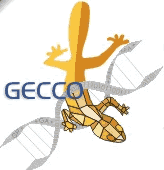

June 26 - 30, 2004
Saturday to Wednesday
Seattle, Washington, USA
Session: |
TUT - Tutorials |
Title: |
Humanized Computational Intelligence with Interactive Evolutionary Computation |
Authors: |
Hideyuki Takagi |
Abstract: |
We study what is interactive evolutionary computation (EC), why interactive EC, and how the interactive EC is used. First, we view the trend of the computational intelligence research from now through the overview of its research in last century. Core technologies in computational intelligence were neural networks (NN), fuzzy systems (FS), and EC, and they were practically used in industrial systems and consumer products, independently or cooperatively. What comes next ? My view is that one of the research directions on computational intelligence at the beginning of the 21st century must be Humanized Computational Intelligence. Imagine consumer robots whose market is expanding in Japan now; `cute', `interesting`, or other subjective keyword is much important for the consumer robots than industrial ones. We state that interactive EC is one of approaches to realized the Humanized Computational Intelligence. Second, we explain what is interactive EC and how it is used. The interactive EC is the EC whose evolutionary process is controlled by human directly. In another word, the fitness function of the interactive EC is human itself. Conventional system optimization requests numerical target to make a cost function. However, there are several tasks whose goals are specified by only human evaluation. The interactive EC is an optimization or design tool for these tasks. A feature of this tutorial is to introduce the wide variety of interactive EC applications, which is the main part of this tutorial. It includes: graphic arts and animation, 3-D CG lighting, music, editorial design, industrial design, facial image generation, speech processing and synthesis, hearing aid fitting, virtual reality, media database retrieval, data mining, image processing, control and robotics, food industry, geophysics, education, entertainment, social system, environmental engineering, MEMS design, and therapy. |
HomeProgramSearchAuthor Index
SponsorsCommitteeContact Us
